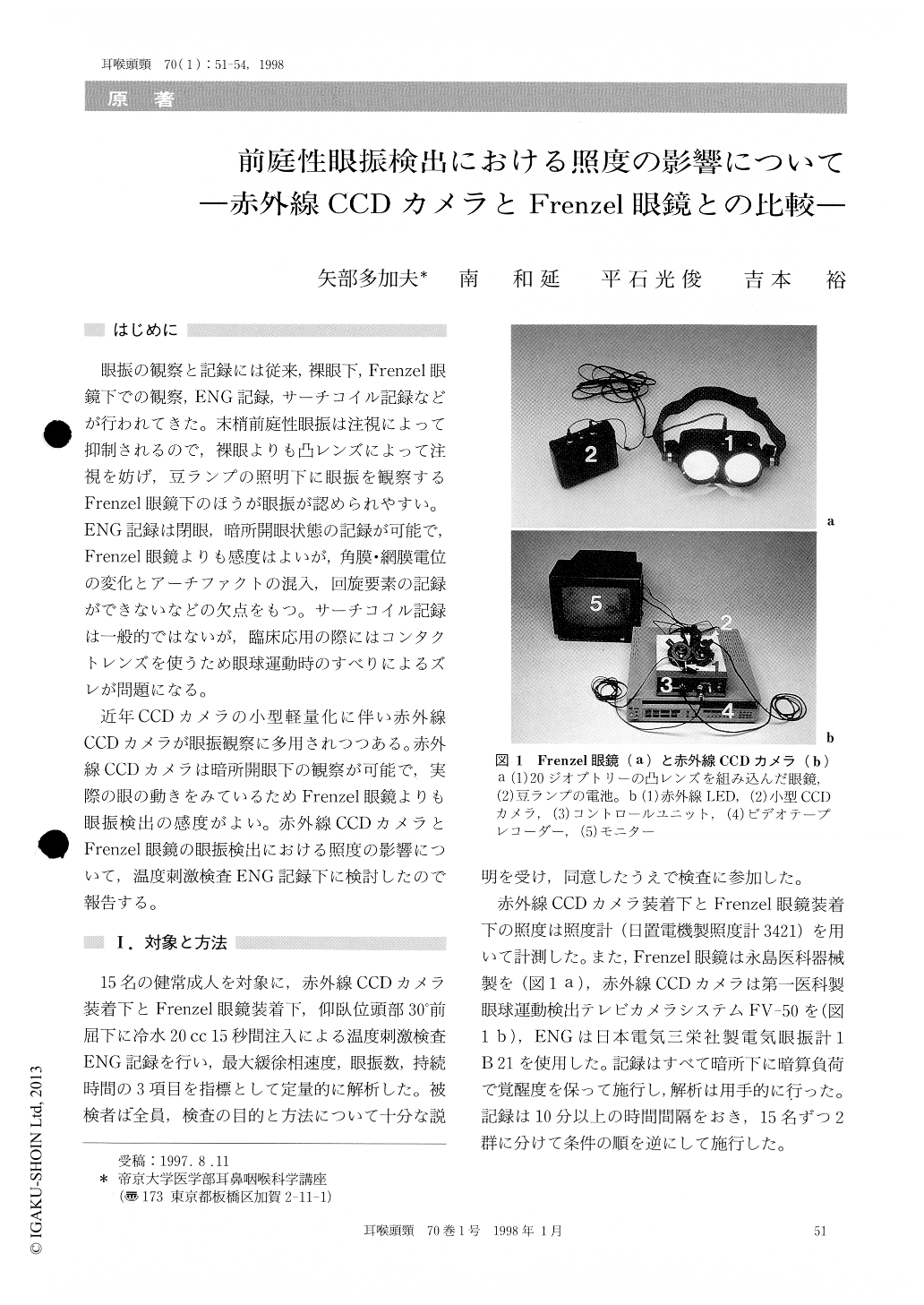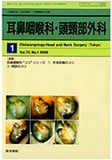Japanese
English
- 有料閲覧
- Abstract 文献概要
- 1ページ目 Look Inside
はじめに
眼振の観察と記録には従来,裸眼下,Frenzel眼鏡下での観察,ENG記録,サーチコイル記録などが行われてきた。末梢前庭性眼振は注視によって抑制されるので,裸眼よりも凸レンズによって注視を妨げ,豆ランプの照明下に眼振を観察するFrenzel眼鏡下のほうが眼振が認められやすい。ENG記録は閉眼,暗所開眼状態の記録が可能で,Frenzel眼鏡よりも感度はよいが,角膜・網膜電位の変化とアーチファクトの混入,回旋要素の記録ができないなどの欠点をもつ。サーチコイル記録は一般的ではないが,臨床応用の際にはコンタクトレンズを使うため眼球運動時のすべりによるズレが問題になる。
近年CCDカメラの小型軽量化に伴い赤外線CCDカメラが眼振観察に多用されつつある。赤外線CCDカメラは暗所開眼下の観察が可能で,実際の眼の動きをみているためFrenzel眼鏡よりも眼振検出の感度がよい。赤外線CCDカメラとFrenzel眼鏡の眼振検出における照度の影響について,温度刺激検査ENG記録下に検討したので報告する。
We investigated the differences in detecting ves-tibular nystagmus between the infrared CCD cam-era (0 Lux) and Frenzel's glasses (500 Lux). Fifteennormal subjects were examined. ENG recordings of the ice water caloric test were performed under both conditions. The results were as follows ; mean maximum slow phase velocity : 40.8 deg/sec with CCD and 23.4 deg/sec with Frenzel, mean number of nystagmus : 411.3 with CCD and 242M with Frenzel, mean duration : 332.5 sec with CCD and 180.3 sec with Frenzel, respectively. Infrared CCD camera was 1.7 to 1.8 times more sensitive than Frenzel's glasses. It is conceivable that these differences are due to the visual suppression on vestibulo-ocular reflexes from the brightness gap of both conditions.

Copyright © 1998, Igaku-Shoin Ltd. All rights reserved.


